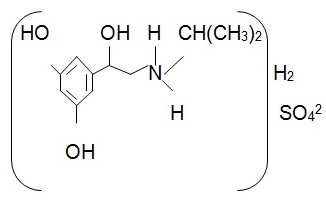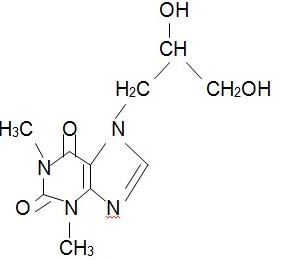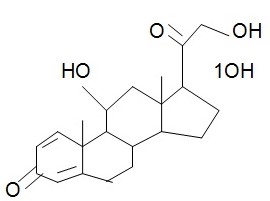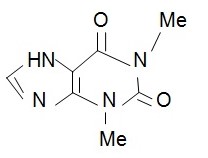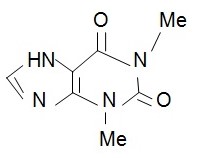Executive Summary
Drug stability if one of the most important qualities of drugs, which is especially important for the health care uses of drugs. The current paper analyzes the stability of such five drugs as metaproterenol sulfate, dyphylline, prednisolone, albuterol, theophyline, and comes to the conclusion that the stability implications of each of the drugs have similarities and differences if compared to all other drugs considered. The major conclusion is that all the five drugs are subject to various types of degradation, and to prevent the latter it is necessary to store and use these drugs in the conditioned that can prolong their half lives and help avoid degradation.
Evaluation of Drug Stability
Data Collection
The issue of drug stability is critical in all spheres of drug use, especially in health care. The simplest formulation of this significance for medicine is that the higher drug stability rates promise better treatment results and medication effects (Rhodes et al, 2000, p. 112). Based on the crucial importance of drug stability, the data on the stability of metaproterenol sulfate, dyphylline, prednisolone, albuterol, theophylline are collected from reputable scholarly resources only.
These sources include primarily the books by such famous pharmacology and pharmaceutics specialists as Aulton (2007), Boylan (2002), Martin, Bustamante, and Chun (1993), etc. Two of the set of major ways to collect and structure the data on the listed drugs include the development of the structural formulae table and the categorization of the drugs by their being susceptible to hydrolysis, oxidation, and reduction.
Drugs’ Structural Formulae
Thus, the following table represents the five drugs selected for the analysis accompanied by their structural formulae:
Table 1. Drugs’ Structural Formulae
Functional Groups
Further on, it is necessary to classify the selected five drugs according to their susceptibility to one of the three basic ways of drug decomposition, i. e. hydrolysis, oxidation, and reduction. Table 2 represents this classification properly:
Table 2. Drugs susceptible for hydrolysis, oxidation, and reduction
Thus, the above table reveals that the bulk, i. e. 3 of 5, of the drugs, are susceptible to oxidation as the way of their degradation. The only drug, for whose degradation and breaking down the hydrolysis is used is metaproterenol sulfate, which is manifested by the use of SO42 in the process of chemical reactions obvious from the structural formula (see Table 1). Theophylline is the only drug, of the five drugs discussed, for whose degradation the process of reduction, i. e. loss of oxygen electrons, is used, while dyphylline, prednisolone, and albuterol are degraded through oxidation (Remington, 2005, pp. 212 – 213)
Analysis
Quantitative Drug Degradation
The quantitative degradation of the considered drugs is carried out in three processes, i. e. hydrolysis, oxidation, and reduction. The process of hydrolysis in metaproterenol sulfate is exemplified at the molecular level by the addition of H2SO42, which manifests that hydrolysis is carried out sing acids like H2SO4 (Baertschi, 2005, p. 189). The molecular-related examples of oxidation in dyphylline, prednisolone, and albuterol are the multiple additions of O, H, and OH molecules as can be observed in Table 1, which illustrates the fact that oxidation, i. e. the increase of oxygen molecules in a substance (Sneader, 2005, p. 208), has taken place in these three drugs. Finally, the process of reduction in the molecular structure of theophylline is manifested by the decrease of O and OH molecules and their substitution by N, HN, and Me molecules (Foye et al., 2008, p. 322).
Products of Drugs Deterioration and Decomposition
Deterioration and decomposition of each of the five drugs analyzed in the current paper have their products. Thus, Carbon monoxide, Sulphur oxides, Nitrogen oxides, Carbon dioxide, and the decomposition products of metaproterenol sulfate (Dewick, 2006, p. 320).
Dyphylline usually has iodine and hydrogen fluorides as its decomposition products (Hamid, 2000, p. 285); the process of deterioration of prednisolone causes the emergence of sulfur oxides, nitrogen, carbon dioxides, carbon monoxide, hydrogen cyanide gas, and smoke (Sneader, 2005, pp. 11 – 12); the decomposition process in albuterol has corrosive and/or toxic nitrogen oxides. An important point about the above-listed decomposition products is that they all turn toxic and rather harmful for a human being under the condition of high temperature of their deterioration or decomposition (Boylan, 2002, pp. 184 – 185).
Quantitative Kinetics
The drugs discussed in the paper also have considerably important quantitative kinetic features. Thus, the reaction rate for metaproterenol sulfate is 1.3, while for prednisolone this rate amounts to 9.8. Albuterol displays the rate of reactions at the level of 3.0; the same factor for theophylline has the meaning of 2.1, while for dyphylline it is 2.56 (Dewick, 2006, p. 291; Baertschi, 2005, pp. 212 – 213; Sneader, 2005, pp. 311 – 313).
Another important kinetic criterion is the meaning of half-life and shelf life of the discussed drugs. Thus, the half-life of metaproterenol sulfate amounts to 21 days, while its shelf life is 8 weeks; prednisolone has these factors at the levels of 4 hours and 3 years respectively; for albuterol, the half-life is 7 – 9 hours, and the shelf life equals 6 months; theophylline 8 hours and 3 years, and the half and shelf life for dyphylline are 2 hours and 2 months (Dewick, 2006, p. 291; Remington, 2005, pp. 245 – 247; Sneader, 2005, pp. 311 – 313)
Synthesis: Degradation Prevention Measures
Accordingly, the above analysis of the major properties and features of the five drugs selected for consideration in this paper allows arguing about the three major measures that can be used for preventing the degradation of metaproterenol sulfate, dyphylline, prednisolone, albuterol, and theophylline.
The first measure is associated with the temperature of storage and use of the drugs. Metaproterenol sulfate, dyphylline, prednisolone, albuterol, and theophylline are reported to degrade and cause the emergence of toxic decomposition products if exposed to high temperatures. Drawing from this, to prevent the fast degradation of these drugs, it is necessary to store them at quite a low temperature, preferably at about 5oC (Hamid, 2000, p. 317; Boylan, 2002, pp. 217 – 218).
The second point is that the above-discussed drugs are degraded by hydrolysis, oxidation, and reduction, which means that to prevent their degradation these drugs should not be exposed to water, acids, and oxygen unless necessary. This way, the shelf and half-life of metaproterenol sulfate, dyphylline, prednisolone, albuterol, and theophylline (Remington, 2005, p. 285; Aulton, 2007, p. 254; Sneader, 2005, p. 294).
Finally, the third measure that might prove to be effective in preventing the drugs’ degradation is the use of metaproterenol sulfate, dyphylline, prednisolone, albuterol, and theophylline only in cases of necessity. The half-life of these drugs is considerably shorter than their shelf life, which means that if the package is opened, the drug should be used or its properties vanish within a short period (Rhodes et al, 2000, p. 112; Remington, 2005, pp. 221 – 222).
Evaluation of Findings
Thus, the above-presented findings of the research, as well as the analysis and synthesis of those findings, allow evaluating them as quite helpful in studying the properties and basic features of the five drugs including metaproterenol sulfate, dyphylline, prednisolone, albuterol, and theophylline. In particular, the findings allow making judgments about the molecular structure of the listed drugs, their degradation process, kinetic features, the products that their deterioration and decomposition bring, and the measures to prevent or at least postpone the degradation of the drugs.
Accordingly, the evaluation of the above-presented findings is rather positive since they allow not only answering the basic questions the current paper has asked, but also determining and analyzing the major similarities and differences of the selected five drugs. At the same time, further studies of these drugs should be carried out with wider scopes of research to ensure more objective and generally applicable conclusions.
Conclusions
So, the conclusions of the current paper are as follows. Firstly, the five drugs selected for the analysis have their similarities and differences in respect of their kinetic features, degradation rates, decomposition and deterioration products, and measures to prevent degradation. Secondly, effective measures exist to stop the drugs’ degradation and increase the effectiveness of their use. Thirdly, and finally, further research is needed to ensure that the findings of this study can be generalized and applied to wider populations of drugs in more numerous contexts and aspects.
References
Aulton, M. (2007). Aulton’s pharmaceutics: the design and manufacture of medicines. Churchill Livingstone.
Baertschi, S. (2005). Pharmaceutical Stress Testing: Predicting Drug Degradation. Taylor & Francis, Incorporated.
Boylan, J. (2002). Encyclopedia of pharmaceutical technology. Informa Health Care.
Dewick, P. (2006). Essentials of organic chemistry: for students of pharmacy, medicinal chemistry and biological chemistry. John Wiley and Sons.
Foye, W. et al. (2008). Foye’s principles of medicinal chemistry. Lippincott Williams & Wilkins.
Hamid, S. (2000). Handbook of polymer degradation. CRC Press.
Martin, A., Bustamante, P., and Chun, AHC. (1993). Physical Pharmacy. Philadelphia: Lea & Febiger.
Remington. (2005). Remington: the science and practice of pharmacy. Lippincott Williams & Wilkins.
Rhodes, C. et al. (2000). Drug stability: principles and practices. Informa Health Care.
Sneader, W. (2005). Drug discovery: a history. John Wiley and Sons.
